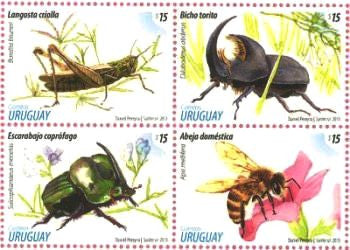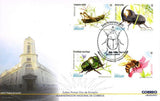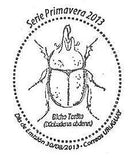- HomeInicio
-
CollectionsColecciones
- SheetletsHojas Filatélicas
- YearbooksAnuarios
- Booklet PaneCarnet Filatélico
- Collections 1997Colecciones 1997
- Collections 1998Colecciones 1998
- Collections 1999Colecciones 1999
- Collections 2000Colecciones 2000
- Collections 2001Colecciones 2001
- Collections 2002Colecciones 2002
- Collections 2003Colecciones 2003
- Collections 2004Colecciones 2004
- Collections 2005Colecciones 2005
- Collections 2006Colecciones 2006
- Collections 2007Colecciones 2007
- Collections 2008Colecciones 2008
- Collections 2009Colecciones 2009
- Collections 2010Colecciones 2010
- Collections 2011Colecciones 2011
- Collections 2012Colecciones 2012
- Collections 2013Colecciones 2013
- Collections 2014Colecciones 2014
- Collections 2015Colecciones 2015
- Collections 2016Colecciones 2016
- Collections 2017Colecciones 2017
- Collections 2018Colecciones 2018
- Collections 2019Colecciones 2019
- Collections 2020Colecciones 2020
- Collections 2021Colecciones 2021
- Collections 2022Colecciones 2022
- Collections 2023Colecciones 2023
- CommemorativesConmemorativos
- CRI
- History of PhilatelyHistoria de la Filatelia
- About usNuestra Empresa
- FAQ
- Contact usContáctenos
Spring 2013 SetSerie Primavera 2013
Horned Beetle
Scientific classification: Class Insecta; Order Coleoptera; Family Melolonthidae.
Binomial name: Diloboderus abderus
Distribution: Uruguay, Argentina and South of Brazil
Description: Black medium-sized insects, mate elytra with shiny pronotum and head. The male stands out due to the big horn in its head. The female doesn't have a horn and has a shiny head and pronotum.
Langosta Criolla (Local Locust)
Scientific classification: Class Insecta; Family Acrididae; Sub-family Gomphocerinae.
Distributions and biogeography: South part of South America. All around Uruguay, part of Argentina and Río Grande do Sul in Brazil.
Description: Small to medium size. The color of their skin variates from cream to reddish brown, in some cases slightly green with balck or dark brown spots; it has a pale line on the sides and some dark and clear spots in the middle. Its pronotum has two dark lines on the sides and another less-colored line in the middle.
Dung beetle
Distribution: Uruguay, Argentina, Brazil, Paraguay and Bolivia
Description: Middle-sized beetle (13 to 23 mm), the color of its body is a shiny metal green. The male has a big central horn on its head, the female doesn't.
Biology: They mostly habit meadows. Males and females make tunnels under animals' excrement from which they feed themselves.
Honey bee
Scientific classification: Class Insecta; Order Hymenoptera; Family Apidae.
Distribution: it comes from Europe, Africa and part of Asia. It was brought to America, Oceania and nowadays it can be found all over the world.
Technical details:
Issue date: 30/8/2013
Face value: $ 60 (set of 4 stamps of $15 Uruguayan pesos each)
Artist: Arq. Daniel Pereyra
Print run: 15000 sets
Printing house: Sanfer SRL
Sheet: 2 sets and 4 bandelettes
Bicho Torito
Ubicación sistemática: Clase Insecta; Orden Coleoptera; Familia Melolonthidae.
Distribución: Uruguay, Argentina, Sur de Brasil Descripción: Insectos de tamaño mediano, de color negro, opaco en los élitros con pronoto y cabeza brillante. El macho se destaca por su gran cuerno frontal de punta aguda y un tubérculo pronotal bífido. En la base se aprecia un apretado grupo de sedas amarillentas. La hembra carece de cuerno y luce una cabeza y un pronoto brillantes.
Langosta Criolla
Ubicación sistemática: Clase Insecta; Familia Acrididae; Subfamilia Gomphocerinae.
Distribución y biogeografía: Se distribuye en la parte sur de Sudamérica, alcanzando hasta el paralelo 41º. Todo el Uruguay, parte de Argentina y Río Grande do Sul en Brasil. Descripción: Tamaño pequeño a mediano. Coloración general crema a marrón rojizo, a veces ligeramente verdosa con manchas marrón oscuro o negras, termina con una línea pálida subcostal y una serie de manchas oscuras y claras en el área mediana. En el pronoto presenta un marcado patrón de coloración de dos bandas laterales oscuras y una mediana poco coloreada. Las carenas laterales bien marcadas y claras, adoptan la forma de una X.
Escarabajo Coprófago
Distribución: Uruguay, Argentina, Brasil, Paraguay y Bolivia Descripción: Escarabajo de tamaño mediano (13 a 23mm), de color verde con brillos metálicos. Presenta un dimorfismo sexual en el macho con un gran cuerno cefálico. Biología: Es un habitante típico de las praderas. Machos y hembras construyen galerías debajo de los excrementos que rellenan con estiércol para alimentarse.
Abeja Doméstica
Ubicación sistemática: Clase Insecta, Orden Hymenoptera, Familia Apidae.
Distribución: es originaria de Europa, África y parte de Asia. Fue introducida en America, Oceanía y hoy posee distribución mundial.
Detalles Técnicos:
Fecha de emisión: 30/8/2013
Valor: $ 60 (serie de 4 sellos de $15 pesos uruguayos c/u)
Dibujante: Arq. Daniel Pereyra
Tirada: 15000 series
Imprenta: Sanfer SRL
Plancha: Compuesta por 2 series y 4 bandeletas




